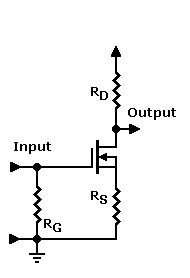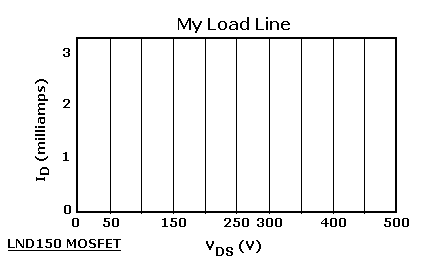Gambling with Silicon Chips
Take the plunge. Designing without factory curves is a gamble. Know the risks: You might turn that junk box part into charcoal. On the other hand, you might well emerge with a working preamplifier. Consider this: If you don't try, all you have is a junk part. Whether the effort is worthwhile is up to you. I say “go for the gold!”
No-curve design is iterative. You try a resistor, take a measurement, and try a different resistor. To save time, you can build the circuit on a solderless breadboard (“plugboard”). Radio Shack and other vendors sell such boards. After a few experiments, you'll like the way the circuit performs. Then you can transfer it to perfboard or an etched PC board.
|
|
|
No-Curve Design Procedure
|

For parts values that I use, mouse over schematic. |
- Adjust the drain voltage. To adjust the voltage, tweak your source resistor value. The goal is to move
drain voltage VD to half (or slightly more) of VDD.
- Higher source resistor values (RS) “push” the drain voltage up.
- Lower source resistor values “pull” the drain voltage down.
You must adjust resistors in the real circuit. A resistor sub box is helpful here. (A couple clip leads and a Radio Shack resistor pack work even better.) Beware! Your PSpice simulator will never predict how the source resistor adjustment will go. After each resistor change, measure VDD. (Plugging in discrete resistor values is better than using a source pot. The pot value seldom corresponds to a standard resistor value.) Eventually you'll reach an RS value near the goal. You're done! - Test your circuit under power.Touch the drain with an insulated alligator clip. Does the clip cause the drain voltage to collapse? If so, increase ID. Then recalculate and replace RD and RS.
Voltage Swing
It's All About Swing. Why are we so concerned about getting the drain voltage halfway to Vcc? Answer: To assure a maximum, undistorted voltage swing. That's why we want to move the quiescent (no-signal) drain voltage to about halfway between ground and B-plus.
Perfect Your Design
Got it working? Now get it perfect! Click... Tweak Your Amp Design.
Contents
- Gambling with Silicon Chips
- Prerequisites
- No-Curve Design Procedure
- Voltage Swing
- Perfect Your Design >
- FAQ
Figures

